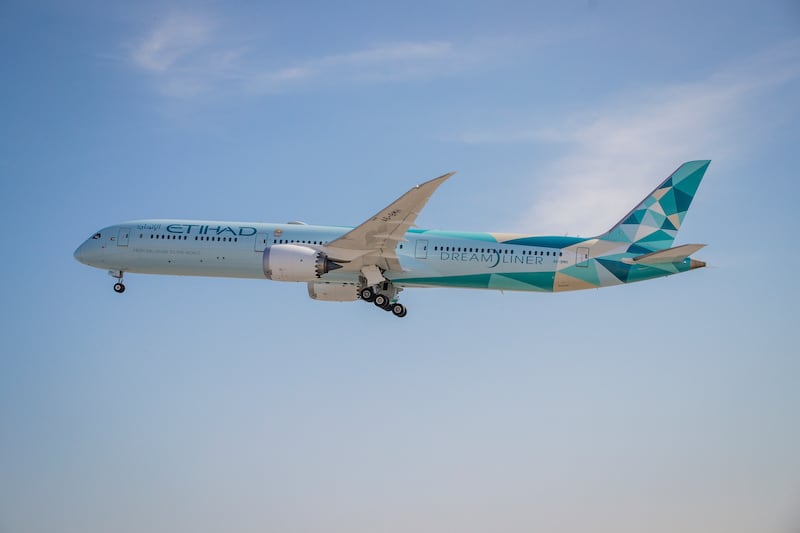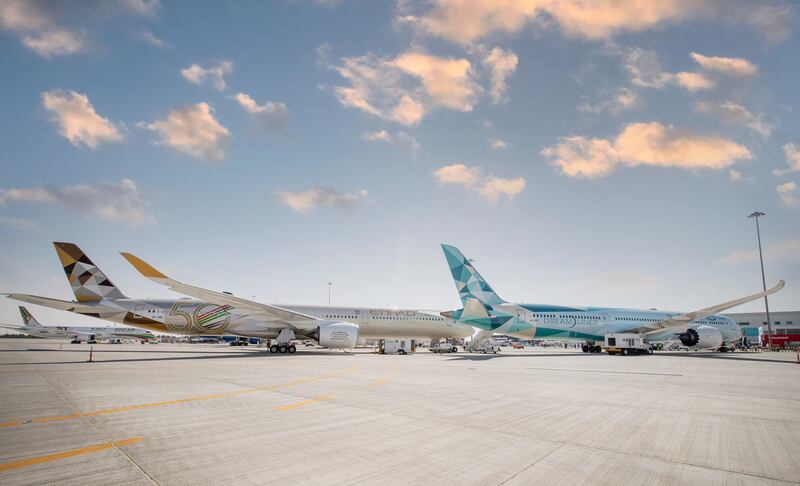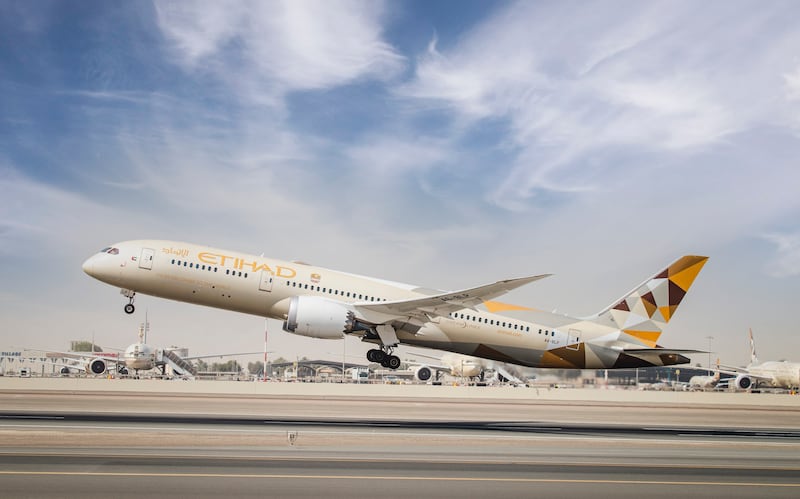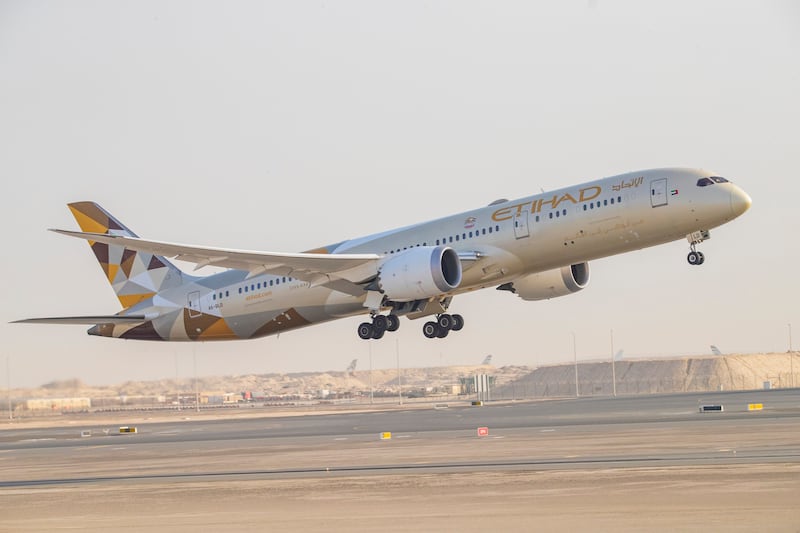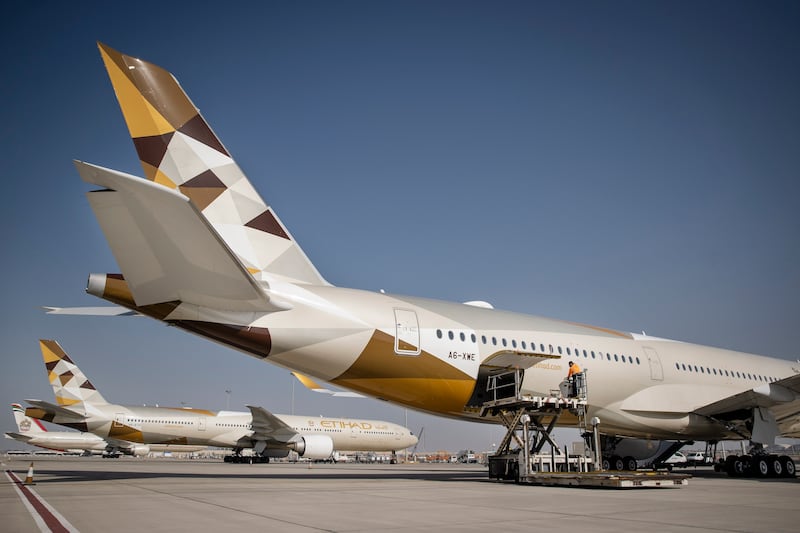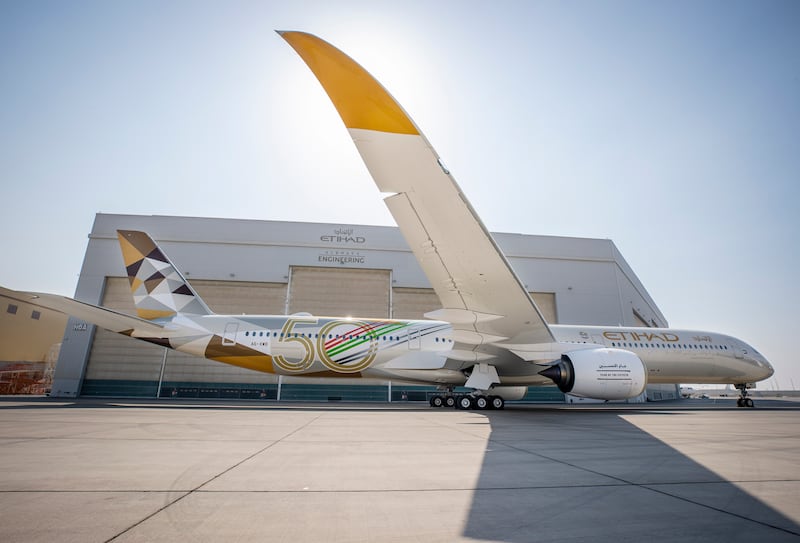Etihad Airways has carried out the world’s most intensive sustainable flight-testing programme, completing 42 eco-flights over a five-day period.
The flights are part of the national airline of the UAE’s commitment to cleaner flying. The programme allowed the Etihad to test several operational efficiencies and technologies that will help to reduce carbon emissions on flights.
Etihad’s newest aircraft, the Sustainable50 A350-1000, officially became the first A350 to operate as an eco-flight during the testing period.
“We believe this is the most intensive sustainability flight-testing programme ever conducted, the results of which will contribute to reducing aviation’s carbon emissions and environmental impact as the learnings are implemented into standard airline operations across the industry,” said Tony Douglas, chief executive at Etihad Aviation Group.

More than half of Etihad's eco-flights utilised contrail prevention technology to help reduce non-CO2 emissions on flights.
Pilots also flew the jets on carefully planned flight paths, which Etihad had co-ordinated with air navigation service providers to help create direct routing and optimised descents, making flights more efficient.
Etihad makes strong case for sustainable commercial flight
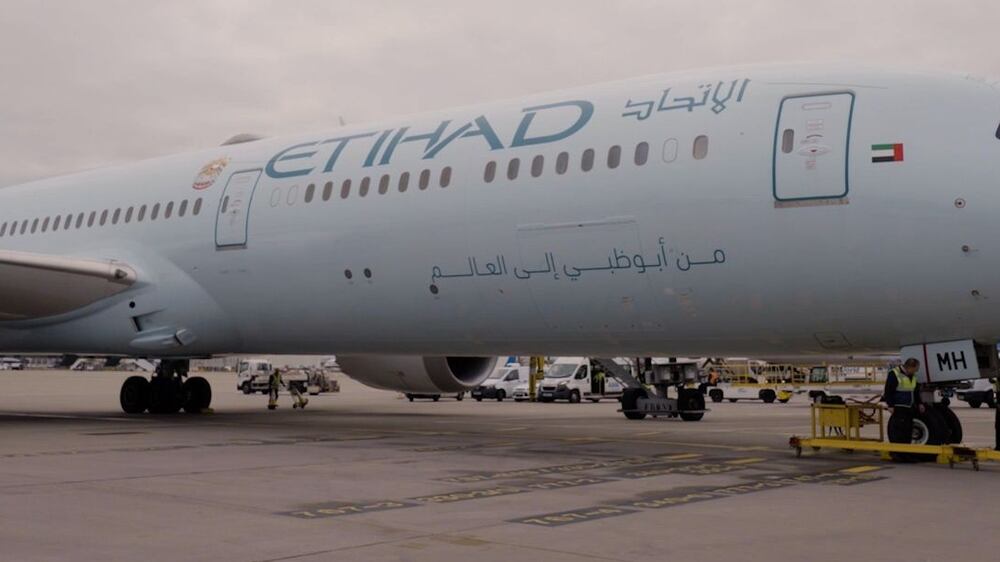
Other technologies seen on the eco-flights included using variable speeds when cruising to help save fuel and reducing reliance on flaps when landing on sufficiently long runways. This reduces drag and requires less fuel consumption during the approach phase. It also reduces noise disturbance near airports and results in around 30 kilograms of fuel saving for each approach.
Flights also used an eco-approach for taxiing on the ground, shutting down a single engine of the aircraft upon landing. This allows most of the ground movements to be carried out via the power of one engine and the process can reduce carbon emissions produced by up to 40 per cent.
All data gathered from the test flights will now be analysed and added to the airline’s knowledge base, which is being used to help the aviation industry transition to decarbonisation.
